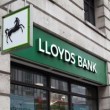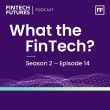Algorithms create new highs (and lows) at Barclays
As we’re broadly in agreement with the view of a character in Carla Lane’s 1970s sit-com The Liver Birds that opera is “just Italians arguing to music”, we’d best pass on this news with as little critical comment as possible.
Following the success of oddball opera subjects – Nixon in China, Jerry Springer: The Opera – and the growth of reality TV, it was only a matter of time before someone came up with the idea of a “reality opera” that “focused on the drama unfolding on an “open outcry” stock trading floor, the type of trading floor on which traditionally traders shout and use hand-signals”.
The culprits creative talents behind this are Alexis Kirke, a composer at the Interdisciplinary Centre for Computer Music Research at Plymouth University, and Greg Davies, head of behavioural and quantitative finance at Barclays, who “have taken reality performances to another level by partnering with Barclays to produce a reality opera”.
Melodies were “carefully crafted with evolutionary computer algorithms”. During the performance singers “sang what they wanted, when they wanted, within certain rules, just like the freedom people have in reality TV programmes.”
Davies role was to apply his behavioural finance expertise to create the market within which the singer-traders were responding, “generating the ebb and flow of emotion and money on a trading floor”.
To enable the music to express the emotional activity on the trading floor, Kirke composed what he calls “trading phrases” such that when most singers were buying, the harmonies between them were pleasant, and when most were selling, the harmonies clashed. When two performers sang ‘buy’ and ‘sell’ melodies for the same asset, the two sounded in time and harmonious.
Open Outcry featured 12 singers and a cellist, Joseph Spooner. The audience sat at tables among the “traders” (in the trading pit), and the conductor rang a bell to signify the market opening. As the cellist played, large screens displayed stock information and the conductor guided some aspects of the permissible actions of the singers. The performers sang one musical phrase to buy each asset and another to sell. The prices were largely driven by random market movements generated by a computer model, though the conductor did have some power to influence stock prices, as did the effect of the “trading” between the singers themselves.










































